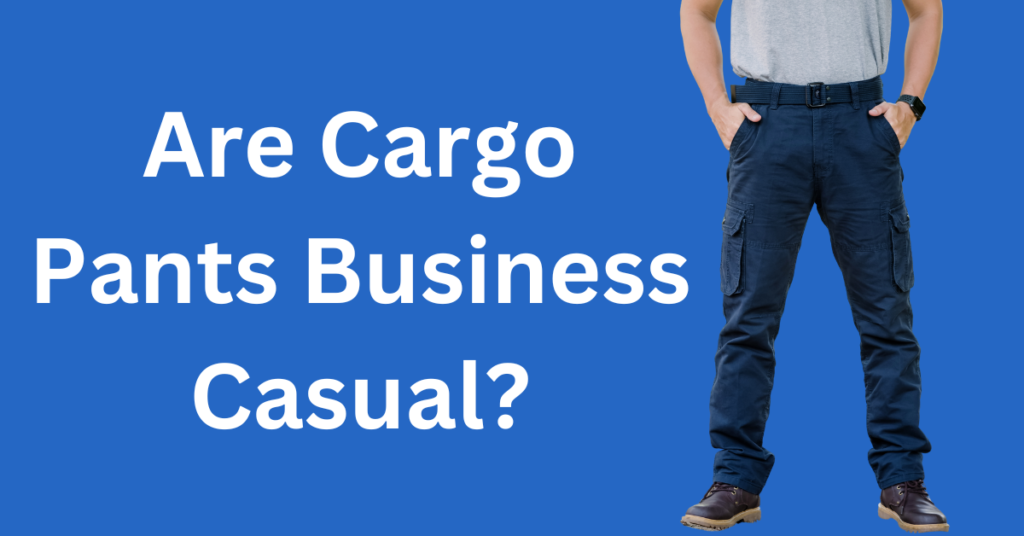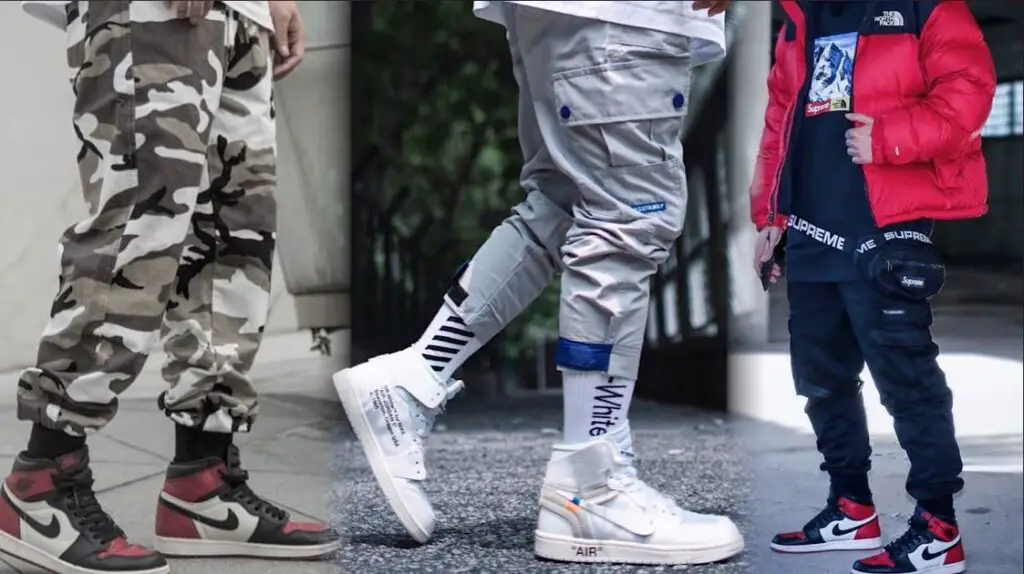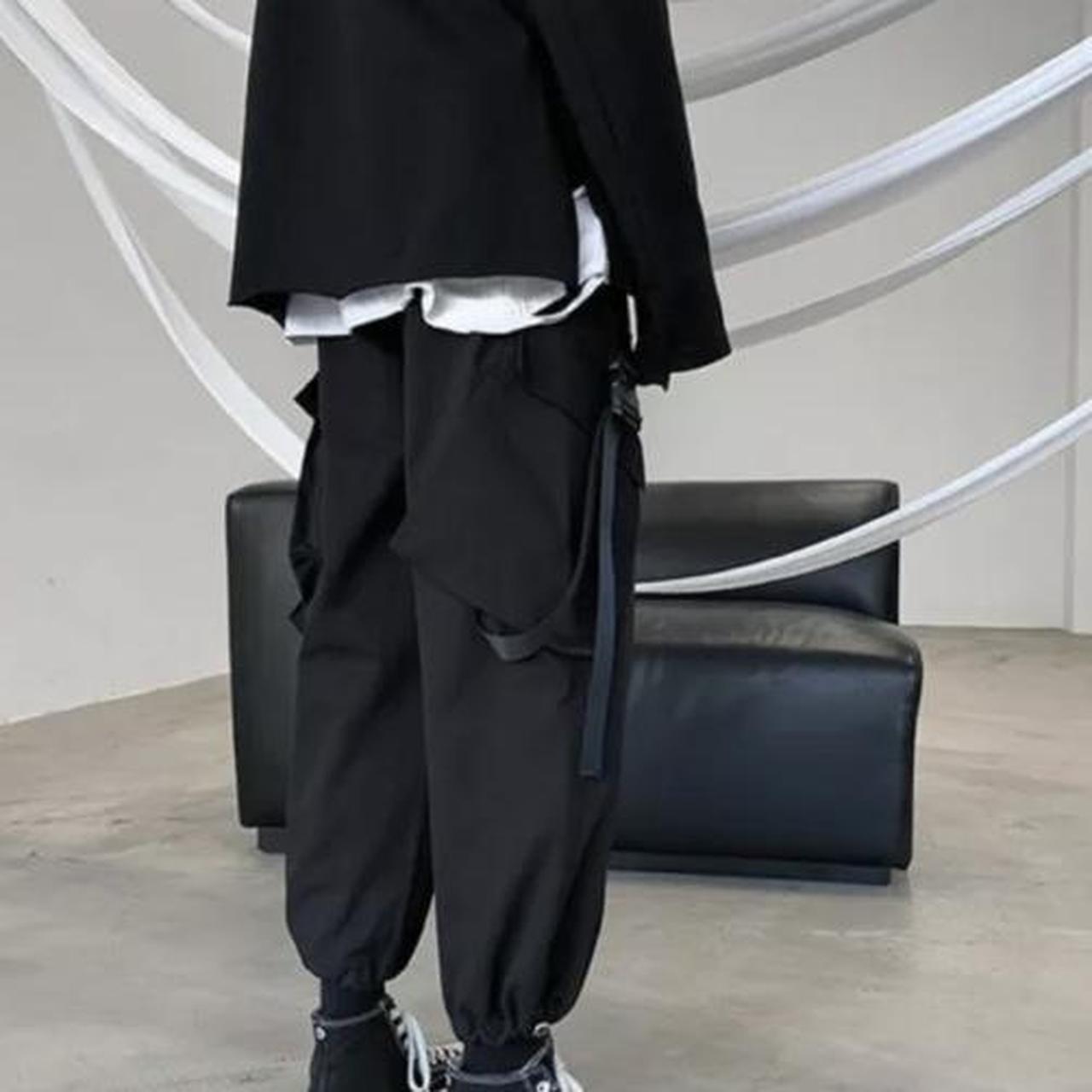Is cargo pants business casual? The question sparks debate, blurring the lines between practicality and professional attire. While their utilitarian origins might suggest otherwise, the versatility of cargo pants allows for surprisingly stylish business casual interpretations, depending heavily on factors like fabric, fit, and overall styling. This exploration delves into the nuances of business casual dress codes, analyzing cargo pants’ characteristics and suitability within various professional contexts.
We’ll examine the evolution of cargo pants from military utility to modern fashion, exploring different styles and fabrics. We’ll then dissect how context – including industry, company culture, and specific events – plays a crucial role in determining whether cargo pants are an acceptable choice. Ultimately, we aim to provide a clear and comprehensive guide, empowering you to make informed decisions about incorporating cargo pants into your professional wardrobe.
Defining “Business Casual”

Business casual is a dress code that strikes a balance between professional and relaxed attire. It’s less formal than business professional but more polished than casual Friday wear. However, the specific interpretation of business casual can vary significantly depending on the industry, company culture, and even the specific role within an organization. A tech startup might have a much more relaxed interpretation than a law firm, for instance.
Business casual nuances often depend on unspoken expectations and the overall tone of the workplace. While guidelines might be provided, successful navigation requires observation and adaptation to the existing workplace norms.
Acceptable and Unacceptable Business Casual Items
Understanding the boundaries of business casual requires careful consideration of appropriate and inappropriate attire. Generally, items that are too revealing, excessively casual, or otherwise unprofessional should be avoided. This includes clothing with graphic designs, ripped or distressed fabrics, overly tight or short garments, and clothing that is stained or wrinkled.
Acceptable items typically include khakis or chinos, button-down shirts, blouses, sweaters, blazers, and dress pants. Shoes should be clean and presentable, such as loafers, oxfords, or flats. Accessories, such as belts and watches, should be tasteful and understated. In contrast, unacceptable items include athletic wear, jeans (unless explicitly permitted), t-shirts with logos, flip-flops, and excessively revealing tops or dresses.
Comparison with Other Dress Codes
Business casual occupies a middle ground between more formal and informal dress codes. Compared to business formal, which demands suits, ties, and conservative attire, business casual offers significantly more flexibility. Business formal is typically reserved for high-level meetings, client presentations, or formal events. In contrast, casual Friday, while varying in its interpretation, generally permits jeans, t-shirts, and more relaxed attire, offering a more relaxed end-of-week option. The difference between business casual and casual Friday lies primarily in the level of formality and the overall professional impression it conveys.
Examples of Business Casual Attire
The following table provides examples of business casual clothing suitable for both men and women. Remember that these are examples, and the appropriateness of any item depends on the specific workplace context.
| Men | Women | Acceptable Accessories | Inappropriate Items |
|---|---|---|---|
| Chinos or khakis | A-line skirt or dress pants | Watches, belts, scarves (professional style) | Athletic wear, graphic tees, flip-flops |
| Button-down shirt or polo shirt | Blouse or sweater | Simple jewelry | Ripped jeans, excessively revealing tops |
| Blazer or sweater | Cardigan or blazer | Handbags (professional style) | Stained or wrinkled clothing |
| Loafers or oxfords | Flats, loafers, or low heels | Professional-looking handbags | Sneakers (unless explicitly permitted) |
Analyzing Cargo Pants

Cargo pants, once solely the domain of military personnel and utility workers, have undergone a remarkable transformation, becoming a staple in contemporary fashion. Their enduring appeal stems from a blend of practicality and style, making them a surprisingly versatile garment that can even navigate the sometimes-tricky terrain of business casual attire. This analysis delves into the characteristics, history, and stylistic variations of cargo pants to assess their suitability within a business casual context.
Cargo Pant Characteristics, Is cargo pants business casual
Cargo pants are defined by their distinctive features, most notably their multiple large pockets. These pockets, typically located on the legs, were initially designed for functionality, providing ample storage space for tools or ammunition. Beyond pockets, the fabric and color choices significantly influence the overall look and feel of the pants. Common fabrics range from durable cotton twill to more lightweight and breathable materials like ripstop nylon. Color options are equally diverse, spanning classic military greens and browns to more contemporary shades like navy, black, and even muted earth tones. The overall design often includes a relaxed fit, though this has evolved significantly over time, as discussed below.
The Evolution of Cargo Pants
The origins of cargo pants can be traced back to military uniforms, specifically those worn by British and American soldiers during World War II. These early iterations were designed for practicality and durability, featuring reinforced fabric and ample pockets to carry essential equipment. Post-war, cargo pants gradually transitioned into civilian wear, initially gaining popularity among workers in various trades. Their adoption by subcultures, particularly in the 1990s hip-hop and grunge scenes, propelled them into mainstream fashion, undergoing stylistic modifications along the way. The shift from purely functional to fashionable apparel highlights the pants’ adaptability.
Cargo Pant Styles and Cuts
The current market offers a wide array of cargo pant styles. Slim-fit cargo pants provide a more tailored silhouette, offering a modern and sleek appearance suitable for more refined settings. In contrast, relaxed-fit cargo pants maintain the original roomy design, prioritizing comfort and practicality. Other variations include tapered cargo pants, which narrow towards the ankle, and straight-leg cargo pants, which offer a classic, balanced look. The choice of cut significantly impacts the overall impression and appropriateness for business casual settings.
Cargo Pant Fabrics and Business Casual Suitability
The fabric choice plays a crucial role in determining the suitability of cargo pants for a business casual environment. Here’s a breakdown of various fabrics and their appropriateness:
- Cotton Twill: A durable and versatile fabric, often suitable for business casual depending on the color and cut. A darker color and slimmer fit will enhance the professional appearance.
- Ripstop Nylon: Lightweight and wrinkle-resistant, this fabric is more appropriate for casual settings and less suitable for business casual unless in a very refined and dark color.
- Canvas: A heavier fabric, generally too casual for business casual wear.
- Chino: A softer, more refined cotton twill, often a better choice for business casual than standard cotton twill.
- Linen: A breathable fabric, but its tendency to wrinkle makes it less ideal for professional settings.
Cargo Pants in Business Casual Contexts: Is Cargo Pants Business Casual

Cargo pants, once relegated to purely utilitarian roles, are increasingly appearing in more refined settings. Their suitability for business casual, however, depends heavily on fabric, color, and styling choices. Careful consideration of these factors can elevate cargo pants from casual wear to a surprisingly versatile option within a professional context.
Fabric and Color Considerations for Business Casual Cargo Pants
The key to making cargo pants business-casual appropriate lies in choosing the right fabric and color. Avoid anything too heavy, stiff, or overtly tactical in appearance. Think refined textures and muted palettes instead. Lightweight cotton twill, durable yet soft linen blends, or even a finely woven chino are far more suitable than heavy canvas or nylon ripstop. Color choices should generally lean towards neutral tones such as navy, olive green (in a subdued shade), charcoal grey, or beige. Avoid bright, bold colors or camouflage patterns. Subtle textures and understated colors contribute significantly to a more polished look.
Styling Cargo Pants for a Business Casual Look
Successfully integrating cargo pants into a business casual wardrobe requires strategic styling. Consider pairing them with a crisp, well-fitting button-down shirt or a tailored polo shirt. A blazer, even a lightweight one, can instantly elevate the outfit, adding a layer of sophistication. Choose shoes that complement the overall look – loafers, oxfords, or clean sneakers can all work, depending on the specific occasion and the level of formality desired. Tucking in your shirt or choosing a slim-fitting top will create a more refined silhouette. Adding a structured belt further emphasizes a polished aesthetic. For instance, a navy linen-blend cargo pant paired with a light blue chambray shirt, a navy blazer, and brown leather loafers creates a sophisticated yet comfortable business casual ensemble. Alternatively, a charcoal grey chino cargo pant paired with a white polo shirt and clean white sneakers offers a more relaxed, yet still professional, appearance.
Situations Where Cargo Pants Might Be Inappropriate for Business Casual
While cargo pants can be incorporated into a business casual wardrobe, there are contexts where they might be deemed unsuitable. Highly formal client meetings, particularly with conservative clients or in traditional industries, might call for a more traditional trouser. Similarly, presentations to senior management or company-wide events where a more formal dress code is expected might necessitate a different choice of pants. The level of formality of the workplace itself is a key factor. A highly formal office environment will likely have stricter dress codes, making cargo pants a less appropriate choice. The key is to consider the overall impression you want to create and whether cargo pants align with the level of professionalism required for the specific situation.
Appropriateness of Cargo Pants in Different Business Casual Scenarios
| Scenario | Appropriateness of Cargo Pants | Reasoning |
|---|---|---|
| Client Meeting (Conservative Industry) | Inappropriate | Requires a more formal and traditional look to project professionalism and respect. |
| Office Work (Casual Workplace) | Appropriate (with careful styling) | Well-styled cargo pants can be a comfortable and acceptable option in a relaxed office environment. |
| Company Event (Semi-Formal) | Conditionally Appropriate | Depends on the event’s formality; dark-colored, well-fitting cargo pants might be acceptable, while brighter colors or overly casual styles would not be. |
Factors Influencing Appropriateness
The acceptability of cargo pants in a business casual environment hinges on a complex interplay of factors. It’s not a simple yes or no answer; rather, it’s a nuanced judgment call dependent on several key elements, ranging from the workplace culture to the specific garment itself and how it’s styled. Understanding these factors is crucial for making informed decisions about professional attire.
Context significantly impacts the appropriateness of cargo pants. The industry, company culture, and even the specific event all play a role in determining whether they’re suitable. What might be acceptable in a creative agency might be considered too casual in a law firm. Similarly, cargo pants might be appropriate for a casual Friday but not for a client presentation.
Contextual Appropriateness
The permissibility of cargo pants in business casual settings is heavily influenced by the specific context. A relaxed tech startup might embrace cargo pants as part of its casual dress code, while a financial institution might view them as too informal. Even within a single company, different departments or teams might have varying levels of formality. Consider the specific event: a team-building activity might allow for more relaxed attire than a meeting with senior executives. Therefore, observing workplace norms and adapting attire accordingly is key.
Influence of Garment Characteristics
The fit, color, and overall condition of the cargo pants are critical determinants of their suitability for business casual settings. Well-fitting cargo pants in neutral colors like navy, olive green, or charcoal gray present a more polished appearance than baggy, brightly colored pairs. The fabric should be of good quality and well-maintained, free from stains or excessive wear. Poorly fitting or damaged cargo pants instantly detract from a professional image, regardless of the context. For instance, cargo pants that are too tight or too loose will appear unprofessional. Similarly, faded or stained cargo pants will project a lack of attention to detail.
The Power of Accessorizing
Strategic accessorizing can significantly elevate or diminish the perceived professionalism of cargo pants in a business casual setting. Appropriate accessories can help to balance the casual nature of cargo pants, creating a more refined and polished look. Conversely, inappropriate accessories can further emphasize their informality.
Visual Representation of Accessory Impact
Consider two scenarios:
Scenario 1 (Elevating the Look): Imagine a pair of well-fitting, dark gray cargo pants paired with a crisp, button-down shirt in a neutral color, a tailored blazer, and polished leather oxfords. A simple leather belt completes the look. The overall impression is sophisticated and put-together, demonstrating attention to detail and a professional demeanor. The accessories—blazer, shirt, belt, and shoes—elevate the cargo pants from casual wear to a business-casual appropriate outfit.
Scenario 2 (Detracting from the Look): Now picture the same cargo pants paired with a graphic t-shirt, brightly colored sneakers, and a baseball cap. This combination is far too casual for most business casual environments. The accessories clash with the cargo pants, emphasizing their informality rather than mitigating it. The overall impression is one of carelessness and lack of professionalism. This example highlights how unsuitable accessorizing can negate any attempt to make cargo pants business appropriate.
Alternatives to Cargo Pants
Cargo pants, with their ample pockets and utilitarian design, often fall outside the typical parameters of business casual attire. While comfortable and practical, their inherent informality can clash with the more polished aesthetic generally expected in professional settings. Fortunately, numerous stylish and equally practical alternatives exist that maintain a professional appearance while offering comfort and functionality.
Several trouser styles offer a more refined alternative to cargo pants within a business casual context. These alternatives prioritize a cleaner silhouette and less overtly casual details, allowing for a more polished and professional look. The key differences lie in the overall design, fabric choices, and the absence of large, cargo-style pockets. This transition to more refined styles often reflects a subtle shift in the perceived level of professionalism and attention to detail.
Suitable Alternative Trousers
The following list details several trouser styles that are generally considered more appropriate for business casual environments, along with their characteristics and suitability for various contexts.
- Chinos: Chinos are a versatile option, typically made from cotton twill. Their clean lines and straight-leg or slightly tapered fit make them appropriate for most business casual settings. They come in a range of colors, from neutral tones like khaki and navy to more subdued shades. Chinos pair well with button-down shirts, polos, and even blazers, offering a balance of comfort and professionalism.
- Dress Pants (Wool or Cotton): While often associated with more formal attire, wool or cotton dress pants in darker colors (navy, charcoal gray, or black) can be suitable for business casual environments, particularly in more corporate settings. The key is to choose a less structured cut than traditional suit trousers; a flatter front or a slightly more relaxed fit can help achieve the right balance. They offer a polished and sophisticated look, appropriate for meetings and client presentations.
- Corduroy Trousers: Corduroy trousers, particularly in fine-wale corduroy, offer a textured alternative to chinos or dress pants. They are generally more appropriate for colder months and offer a slightly more casual feel than dress pants. Darker colors and a slim or straight fit are best suited for business casual settings. They add a touch of sophistication while maintaining comfort and warmth.
- Twill Trousers: Twill trousers, similar to chinos but often featuring a slightly more refined weave, are a versatile option. They offer a smoother drape and a more polished look than chinos, making them suitable for a wider range of business casual environments. Neutral colors and a tailored fit are key to achieving a professional appearance.
Comparison of Cargo Pants and Alternatives
Cargo pants, with their multiple large pockets and typically loose fit, present a more utilitarian and casual aesthetic. In contrast, chinos, dress pants, corduroy trousers, and twill trousers emphasize clean lines, a more tailored fit, and a generally less rugged appearance. This difference in style and silhouette is the primary reason why alternatives are often preferred in business casual settings, where a more polished and professional look is generally expected. The absence of large, bulky pockets contributes significantly to a more refined and less overtly casual overall impression.






